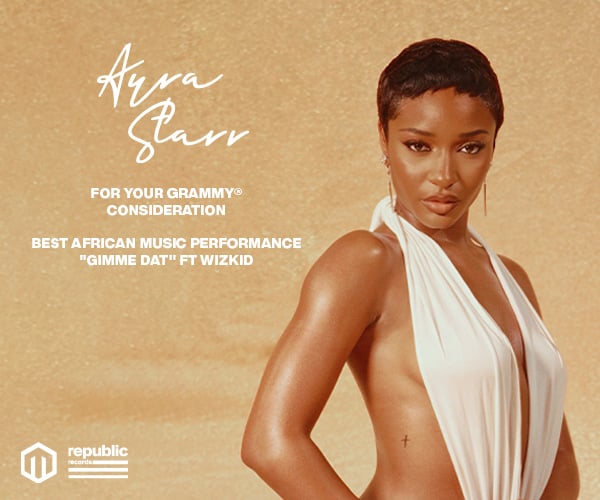The following MBW op/ed comes from Deborah Mannis-Gardner (pictured), Owner/President, DMG Clearances, and a global expert on music rights clearances. After starting DMG Clearances, Inc. in 1996, Mannis-Gardner has since cleared releases for artists including Drake, Tyler the Creator, DJ Khaled, Eminem, Pop Smoke, Logic, Justin Bieber, Kendrick Lamar, Lil Wayne, Frank Ocean, Jay-Z, John Legend, Megan Thee Stallion, Big K.R.I.T., Brockhampton, French Montana, Big Sean, J. Cole, Lady Gaga, Rihanna, Beyoncé, and more. Mannis-Gardner has also handled music clearances for metaverse platforms Meta and Roblox; films by Martin Scorsese, The Coen Brothers, and Richard Linklater; TV networks and streaming services such as HBO, Showtime, Netflix, Disney+, and Paramount+; ad campaigns for Google, Ciroc, and Kmart; podcasts such as Rick Rubin and Malcolm Gladwell’s “Broken Record”; video games such as Rockstar Games franchises “Grand Theft Auto” and “Red Dead Redemption”; and political campaigns such as Joe Biden and Kamala Harris’ 2020 presidential campaign. Mannis-Gardner also served as the award-winning music supervisor of HBO’s Dr. Dre and Jimmy Iovine docu-series “The Defiant Ones.”
It feels like just yesterday when “the metaverse” was only a hot new word, a thing of the distant future. Now, the music industry is playing catch-up to the world of Web3 and the rapid pace with which it is changing and growing.
Whether it be Lil Nas X performing in Roblox, AI musicians, or NFTs, Web3 is opening the door to many exciting and new opportunities. However, they also come with a subset of issues that the music and tech industries need to address as soon as possible.
Music rights are my life’s work and passion, and I have had the honor of working with artists like DJ Khaled, Megan Thee Stallion, Drake, and more, as well as film/TV and podcast projects for Rick Rubin, The Coen Brothers, Richard Linklater, Netflix, and Disney+, among others.
Recently, I worked with Post Malone to handle music clearances for his metaverse performance on the Meta platform, and something struck me.
Back in the early 1990s, when hip-hop artists were struggling to legitimize sampling, music industry executives tried to fit a square peg in a round hole by applying existing licensing criteria and terminology to a new field that they considered a “fad.” Of course, sampling only grew more popular, and eventually, a new licensing framework was created to accommodate it.
Currently, we are having the same problem with Web3, and after that Post Malone metaverse project, I immersed myself in the Web3 world to apply the lessons I learned from the early days of sampling to this new field. More specifically, it has been my personal goal to address licensing terminology, which in my experience, has been a very complicated and confusing process for everyone involved.
It all begins with mechanical licenses, which cover the publishing side of a composition. Mechanical royalty rates are set by the government and are not subject to negotiations — if an artist wants to cover a song and release it on their album, they only need to provide notice and pay the government-mandated royalty.
Where things get tricky is when a song is paired with a visual, like in an advertising campaign, TV show, or movie. At that point, a synchronization license is needed, which requires negotiations with not only the publishing company but also the label that owns the master recording of a work. Either party can request as much money as they want, and they can shut down the usage completely by saying no.
However, over the past few years, mechanical and synchronization licenses have quickly become antiquated. For example, sometimes music usages in audiobooks and podcasts are paid via mechanical licenses, the argument being that there is no visual linked to the audio. But shouldn’t a song’s rights-holders get the opportunity to decide which kinds of audio content they want their songs to be associated with, and for how much?
Now, Web3, the metaverse, and NFTs are challenging these licensing definitions even further. With traditional synchronization licenses, rights-holders can see exactly what they are agreeing to connect their music with. But in the metaverse, the vast majority of content is user-generated, and that should come into consideration. Also, NFTs can take many forms, from an exclusive track, which could fall under a mechanical license, or video/audio set to music, which would require a synchronization license. NFTs can also be resold, and rights-holders should be able to receive a portion of each sale.
So, how do we solve this problem? I would argue the best way is to introduce the new licensing terms Art-Driven Mechanical (for the mechanical reproduction in another art form) and Art-Driven Synchronization (for the syncing of music to another art form). By creating these new terms for Web3, we can grant permission to music copyright holders to generate at least two values or quotes as a means of collecting proper compensation for new Web3 music uses, whether or not music is the primary art form — and this art form will include the written word and other media.
For example, an NFT would be subject to three fees: an art-driven mechanical royalty rate to generate income from included songs over time, an art-driven synchronization flat fee to cover any video/audio syncs, and an ongoing resale fee that provides a portion of future revenue to rights-holders on a pro-rated basis. Music usages in the metaverse would then be subject to two fees: an art-driven synchronization flat fee to use the song in the platform and a separate user-generated content (UGC) fee, in addition to the performance fees for the recording and compensation through PROs and CMOs.
To help make this a reality, I have joined fellow music industry professionals Jessica Vaughn (Head of Sync of Venice Music and President of Head Bitch Music), Stacey Haber (The Music Firm), Vickie Nauman (Founder & CEO of CrossBorderWorks), Jess Furman (SVP of Sync Strategy at Big Noise Music), Brian Blatz (Attorney for Granderson Des Rochers), and Donovan Brown (Sr. Community Manager at Venice Music) to start the Web3 Music Rights Group. Our goal is to share insight and knowledge from our broad areas of expertise in music licensing, law, music tech, record labels, publishing, and more.
The music industry is always evolving, and it is crucial that we have more discussions about embracing the world of Web3 and the metaverse so that we are always protecting the art and everyone involved. Redefining terminology can be scary and a lot of work to figure out, but we will all be left better prepared instead of playing catch-up. I encourage anyone interested in being part of this discussion to join the Web3 Music Rights Group by registering at web3musicrights.com.Music Business Worldwide





